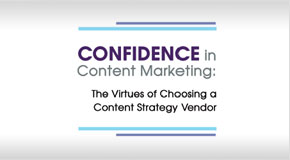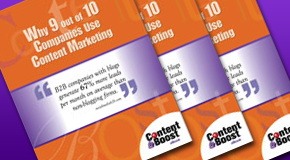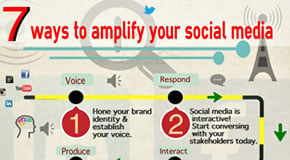Picture this: It is the distant future. A lone Internet surfer is scanning the back pages of the Web and comes across your dusty and forgotten blog post. Your post is excavated, and sent to a lab for research purposes.
What happened to such a promising post? Wasn’t it well written? Well, it might have been great, but you didn’t produce anything after. And while all of your competitors were busy churning out daily content, your blog post grew old quickly — and rather than going viral, your online presence reached relic status.
Integrated marketing refers to the use of a variety of marketing and communications platforms and promotional strategies to reach a wider audience. Traditional marketing techniques — such as SEO, email and telephone campaigns — no longer get the job done, especially when you take a siloed marketing approach. Conversely, you should be weaving in multiple marketing strategies to your business plan, if they make sense. There’s a laundry list of marketing tactics — from blog posts to social media accounts to infographics to video production to radio advertising to print. Your job is to choose the various vehicles that will help your organization most.
Here are five top reasons why an integrated marketing approach needs to be in your future plan:
1. It keeps your business relevant.
Keeping up with your competitors means making your company’s corporate identity known to as many stakeholders as possible. To do this, it is important to be everywhere—not just in one place. Your content should be posted regularly (to your website, blog, newsfeed, social media accounts, etc) to avoid getting lost in the shuffle. Blogs should be posted daily, or weekly. Likewise, you should tweet several times per day.
Remember: an integrated approach to marketing means speeding up and changing directions when your competitors stop to sleep for the night. You can never have too much content. But you can have too little.
2. Integration strengthens your brand’s identity.
The goal with integrated marketing is to make your consumers think of your products or services in ways they typically would not. And by utilizing many platforms you increase your chances of your brand being introduced to various key players. Your brand should be able to navigate from Twitter to Facebook to Pinterest to LinkedIn seamlessly, despite the fact that you are using them for different purposes. Keep the same language and branding visuals. Use the same marketing concepts. But establish a distinct voice across all your different platforms. Your content needs to discretely stimulate an audience to think about your product and take action.
3. Spreading your content is a built in insurance policy.
A failed advertising plan with no backup can crash and burn. And that can be devastating. But an integrated approach to marketing prevents this. When you cover all of your bases and don’t put too much stock into one advertising venture, then damage can be absorbed by other marketing platforms. Take Cheerios, for example, who released a recent commercial that sparked a ton of controversy. However, since the brand is active across multiple social media outlets, they were virtually unaffected by the commercial gone wrong. While a project that fails can be a harrowing experience for an organization, creating a backup takes some of the sting out of a loss.
4. The consumer is in control.
Marketing used to be all about telling the public what they need, and ignoring the explanation behind your logic. This is why print advertising used to work. Consumer opinion was considered to be irrelevant. But now, if you adopt an integrated marketing campaign you are shifting the power to the consumer. It might sound scary, but that’s where the power needs to be as your competitors are already out there talking with your prospects. Now, consumers are better informed and aware of their other options, so you need to try extra hard to convince them why your service is the best way to go. This also means listening to what they want, through sites like Yelp. And right now, statistics indicate that disregarding consumers over social media can increase your churn rate by 15 percent.
5. The Internet never closes.
Over the course of a day, a person is going to spend a lot more time online than they will passing your billboard or hearing your radio advertisement. This is because the average American spends about 26 hours per week online. From the time consumers get up to the time they go to bed, they are constantly browsing the web in many different ways. So, it makes sense to capitalize on this statistic and sign up for various social networking platforms. It is through these accounts that you can target consumers where they are spending the majority of their time—online.
It doesn’t matter if your organization is re-integrating orphaned elephants back into the wild or making chocolate chip cookies—chances are, you are doing something amazing. Don’t let your exciting project become an e-fossil. If you make it a point to spread your content around on a consistent basis, then consumers will be actively talking about your company long into the future.
Edited by
Carrie Schmelkin















